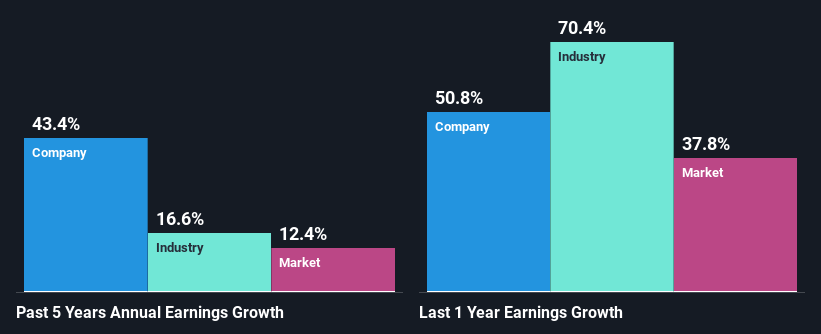Is Teradyne, Inc.'s(NASDAQ:TER) Recent Stock Performance Tethered To Its Strong Fundamentals?
Most readers would already be aware that Teradyne's (NASDAQ:TER) stock increased significantly by 8.0% over the past week. Given that the market rewards strong financials in the long-term, we wonder if that is the case in this instance. Specifically, we decided to study Teradyne's ROE in this article.
ROE or return on equity is a useful tool to assess how effectively a company can generate returns on the investment it received from its shareholders. In other words, it is a profitability ratio which measures the rate of return on the capital provided by the company's shareholders.
Check out our latest analysis for Teradyne
How Is ROE Calculated?
The formula for return on equity is:
Return on Equity = Net Profit (from continuing operations) ÷ Shareholders' Equity
So, based on the above formula, the ROE for Teradyne is:
38% = US$953m ÷ US$2.5b (Based on the trailing twelve months to July 2021).
The 'return' is the yearly profit. One way to conceptualize this is that for each $1 of shareholders' capital it has, the company made $0.38 in profit.
What Is The Relationship Between ROE And Earnings Growth?
We have already established that ROE serves as an efficient profit-generating gauge for a company's future earnings. We now need to evaluate how much profit the company reinvests or "retains" for future growth which then gives us an idea about the growth potential of the company. Assuming everything else remains unchanged, the higher the ROE and profit retention, the higher the growth rate of a company compared to companies that don't necessarily bear these characteristics.
Teradyne's Earnings Growth And 38% ROE
First thing first, we like that Teradyne has an impressive ROE. Second, a comparison with the average ROE reported by the industry of 15% also doesn't go unnoticed by us. Under the circumstances, Teradyne's considerable five year net income growth of 43% was to be expected.
As a next step, we compared Teradyne's net income growth with the industry, and pleasingly, we found that the growth seen by the company is higher than the average industry growth of 17%.
The basis for attaching value to a company is, to a great extent, tied to its earnings growth. What investors need to determine next is if the expected earnings growth, or the lack of it, is already built into the share price. By doing so, they will have an idea if the stock is headed into clear blue waters or if swampy waters await. Has the market priced in the future outlook for TER? You can find out in our latest intrinsic value infographic research report.
Is Teradyne Using Its Retained Earnings Effectively?
Teradyne's three-year median payout ratio to shareholders is 12%, which is quite low. This implies that the company is retaining 88% of its profits. So it looks like Teradyne is reinvesting profits heavily to grow its business, which shows in its earnings growth.
Besides, Teradyne has been paying dividends over a period of eight years. This shows that the company is committed to sharing profits with its shareholders. Our latest analyst data shows that the future payout ratio of the company is expected to drop to 6.2% over the next three years. Regardless, the ROE is not expected to change much for the company despite the lower expected payout ratio.
Conclusion
On the whole, we feel that Teradyne's performance has been quite good. In particular, it's great to see that the company is investing heavily into its business and along with a high rate of return, that has resulted in a sizeable growth in its earnings. That being so, a study of the latest analyst forecasts show that the company is expected to see a slowdown in its future earnings growth. Are these analysts expectations based on the broad expectations for the industry, or on the company's fundamentals? Click here to be taken to our analyst's forecasts page for the company.
This article by Simply Wall St is general in nature. We provide commentary based on historical data and analyst forecasts only using an unbiased methodology and our articles are not intended to be financial advice. It does not constitute a recommendation to buy or sell any stock, and does not take account of your objectives, or your financial situation. We aim to bring you long-term focused analysis driven by fundamental data. Note that our analysis may not factor in the latest price-sensitive company announcements or qualitative material. Simply Wall St has no position in any stocks mentioned.
Have feedback on this article? Concerned about the content? Get in touch with us directly. Alternatively, email editorial-team (at) simplywallst.com.

 Yahoo Finance
Yahoo Finance 
